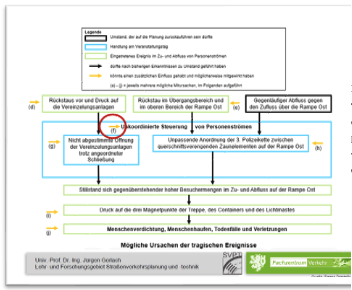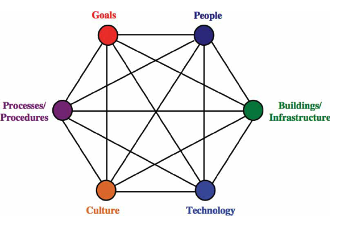Crowd Management: 1 An Introduction
Still today, the term crowd management is often used in different contexts and with different meanings. ‘Crowd management’ has become a buzzword, “everything is crowd management”. In English-speaking countries, the term has long existed as an established term and planning approach, where crowd management refers to the careful and systematic planning for people in crowds.
As early as 1980, the Task Force on Crowd Control and Safety summarised its findings in its report ([1]) on the accident at a concert by the band The Who in 1979, in which eleven people died, that planning for crowd management is the most important aspect of providing a safe and pleasant event environment.
Definition
The American planner John J. Fruin defined crowd management in 1993 as the systematic planning for and continuous monitoring and control of an orderly gathering of people and thus describes a preventative planning approach that places the visitor and their safety (well-being) at the centre of planning. Fruin (1993) defines the primary objectives of crowd management as preventing the build-up of high pressure and uncontrolled movements of or in crowds.
In contrast to this, there is the term crowd control, which describes the reaction to an emerging or already existing problem with people.[1] Of course, these measures must also be planned in detail – scenarios with the corresponding crowd control measures are therefore always an important part of a crowd management plan or security concept. Fruin (1993) rightly emphasises here that inadequate or poorly implemented crowd control measures have accelerated rather than prevented accidents.
Influencing factors
If we look at the major disasters at events, we often find failures in the areas of organisation and management, communication or simply neglecting the special features of individual events. The regular causes of disasters at events include, for example
- Inadequate communication and imprecise agreements
- unclear allocation of responsibilities
- Lack of risk management / lack of risk analysis
- Lack of a ‘plan B’
- neglect of areas or phases of the event
- Neglect of the audience profile

| Figure 1: The Loveparade Incident: a combination of planning failures, communication lacks, missing procedures … Source: Uni Wuppertal |
Fruin also has summarised which factors have led to accidents within crowds
- Force – Pressure / Crowding
- Information – Information and communication
- Space – The visitor’s space of movement, including infrastructure
- Time – The temporal dimensions of space utilisation
13 years earlier, the Cincinnati Report [2] emphasised the need for comprehensive consideration of all influencing factors:
“Crowd management must take into account all the elements of an event especially the type of event (circus, sporting, theatrical, concert, rally, parade, etc.), characteristics of the facility, size and demeanor of the crowd, methods of entrance, communications, crowd control, and queuing. As in all management, it must include planning, organising, staffing, directing and evaluating. Particularly critical to crowd management is defining the roles of parties involved in an event, the quality of the advance intelligence, and the effectiveness of the planning process.”
| Figure 2: A socio-technical systems perspective (Challenger et al., 2010a, p. 74) [4] |

As part of preventive security planning, the following factors must be clarified as a minimum:
- Type of event and the resulting special features
- Visitor profile: gender, age distribution, expected behaviour …
- Arrival and departure modalities: when, with what, from where…
- Number and distribution: total and in phases (maximum utilisation temporary / local)…
- Use of space: available areas (at the entrance / in the event area / at the exit, escape routes, relief areas, etc.), use and utilisation of these areas…
- Infrastructure provided: barriers, stages, grandstands, sanitary facilities …
- Organisational issues: procedures (e.g. control procedures), personnel, roles and responsibilities …
- Information and communication before and during the event
Resources
- [1] Fruin, John J. (2002): The causes and prevention of crowd disasters. Originally presented at the First International Conference on Engineering for Crowd Safety, London, England, March 1993.
- [2] Wertheimer, P. (1980): Crowd Management. Report of the Task Force on Crowd Control and Safety. Cincinnati, July 1980.
______________________________________________________
Read all articles from this series on event safety:
Safety Planning for Events: An Introduction
The Risk Management Circle in the Context of Events: 1 Introduction
The Risk Management Circle in the Context of Events: 2 Risk Identification
The Risk Management Circle in the Context of Events: 3 Risk Assessment
The Risk Management Circle in the Context of Events: 4 Risk Response
The Risk Management Circle in the Context of Events: 5 Risk Monitoring and Review
The Risk Management Circle in the Context of Events: 6 Risk Mitigation
Crowd management: 1 An Introduction
Crowd Management: 2 The need of a systematic approach
Crowd Management: 3 The people
Crowd Management: 4 Safety by Design
Crowd Management: 5 The Ingress and Egress Areas
Emergency planning: Introduction
Emergency Management: 1 Emergency Plans
Emergency Management: 2 Scenarios
Emergency Management: 3 Learning from Disasters

